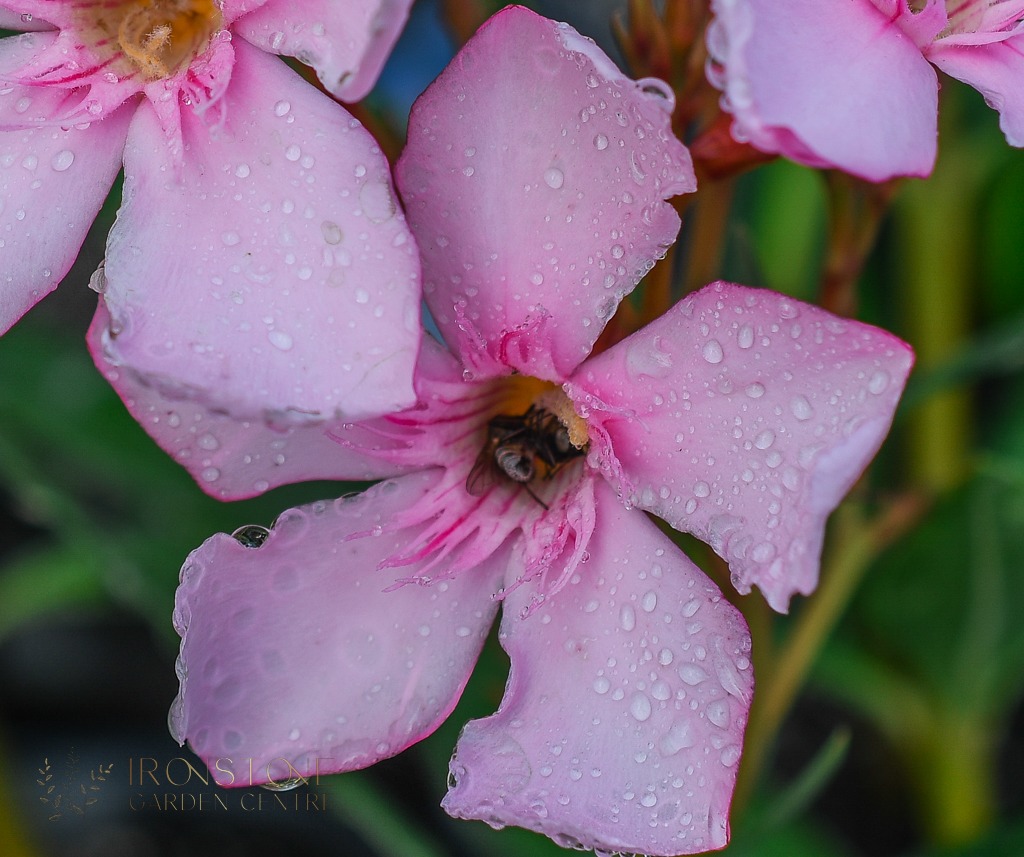Why Are Bees Sleeping in Our Oleanders?


As I walk through our garden centre, I've noticed something intriguing: bees nestled within the vibrant blooms of our oleanders. This fascinating behaviour raises questions about why these industrious insects choose to rest in our flowers. In this blog, I’ll share what I’ve learned about this phenomenon, including the likely bee species involved and the reasons behind their behaviour.
Identifying the Bees
In our garden centre, we’re fortunate to host a variety of native bee species, each playing a crucial role in pollination and maintaining biodiversity. Here are some of the common bees you might see resting in our oleanders:
- Blue-banded Bee (Amegilla cingulata): Recognisable by their striking blue bands, these bees are often seen buzzing around during the day and may rest in our flowers at night.
- Teddy Bear Bee (Amegilla bombiformis): With their fluffy, teddy bear-like appearance, these bees are another member of the Amegilla genus.
- Leafcutter Bees (Megachile spp.): Known for their leaf-cutting habits to build nests, male leafcutter bees often seek refuge in flowers.
- Carpenter Bees (Xylocopa spp.): Larger and robust, these bees sometimes rest in flowers when they can’t return to their nests.
The Phenomenon of Bees Sleeping in Flowers
Bees sleeping in flowers is a behaviour most commonly seen in male bees. Unlike female bees, which return to their nests, male bees often lack a permanent shelter. Here’s why they might choose our oleanders for a good night’s rest:
- Male Bees Resting: Male bees don’t have a nest to return to at night. They often seek shelter in flowers where they can rest and conserve energy until morning.
- Temperature and Shelter: Flowers provide a microclimate that is often warmer or more stable than the surrounding air. This warmth is crucial during cooler nights or sudden temperature drops, offering a cosy refuge for resting bees.
- Flower Species: Some flowers are more attractive to bees for resting due to their structure, nectar availability, and scent. Our oleanders, with their large, protective blooms, are particularly favoured.
Conditions and Reasons for Sleeping in Flowers
- Night Time: Bees are diurnal, meaning they’re active during the day and rest at night. Flowers like our oleanders offer a convenient and safe place for nighttime rest.
- Weather Conditions: Adverse weather, such as rain or strong winds, can drive bees to seek shelter in the nearest flowers.
- Temperature Regulation: Flowers can provide a stable, warmer environment compared to the open air, protecting bees from temperature extremes.
- Safety from Predators: The structure and scent of flowers can offer some level of camouflage and protection from potential predators.
Oleanders as a Resting Spot
Our oleanders (Nerium oleander) are known for their dense, bushy structure and large, fragrant flowers, making them ideal resting spots for bees. The flowers' structure provides ample shelter and warmth, attracting bees to rest. Additionally, the oleander’s long blooming period ensures that bees have a consistent place to rest throughout much of the year.
Observing bees sleeping in our oleanders at the garden centre offers a glimpse into the complex and fascinating behaviours of these essential pollinators. By understanding why bees choose to rest in flowers, we can better appreciate their role in our ecosystem and the importance of preserving their habitats. Ensuring that our garden centre provides safe havens for bees not only supports their populations but also enhances the biodiversity of our local environment.
So next time you visit our garden centre, take a moment to look closely at our flowers. You might just spot a sleepy bee, taking refuge in the petals, contributing quietly to the wonders of nature right in our backyard.
